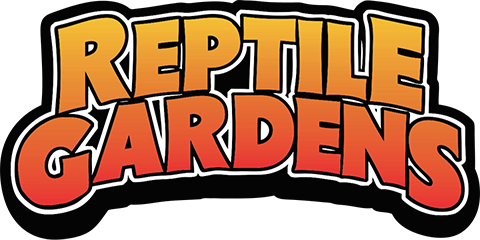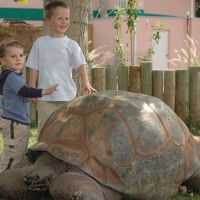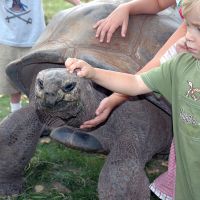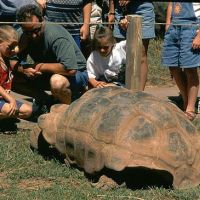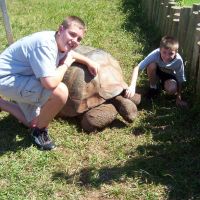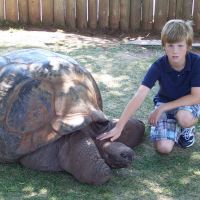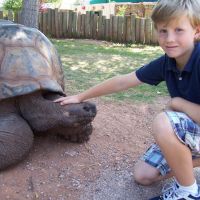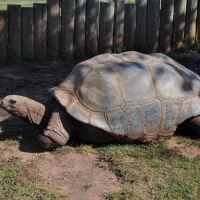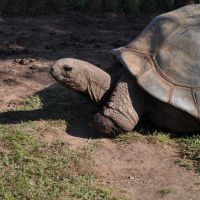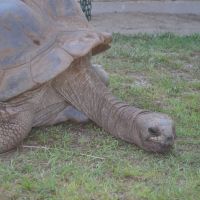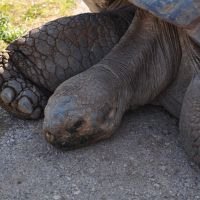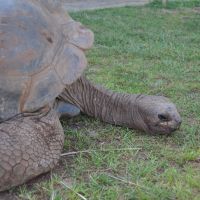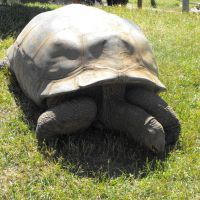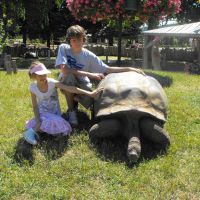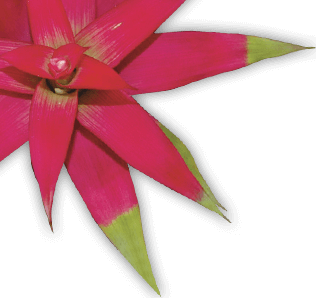Giant Tortoises
Aldabra Tortoises
With all of the shows and attractions, a day at Reptile Gardens can be pretty busy. Take some time to slow down and come encounter our gentle giants, the Aldabra Tortoises. Meet Tank, Orville, and Samson - Reptile Gardens' most popular animal residents. Get up close and personal. Don’t forget to take lots of pictures (the camera loves them, and they’ve recently become Instagram stars).
Tortoise Fun Facts
- Giant tortoise eggs are about the size of a tennis ball and are buried in moist sand or loose soil. At hatching, the babies are about 3 inches long.
- It takes a giant tortoise about 20 years to reach breeding size.
- Galapagos and Aldabra tortoises are strict vegetarians, feeding on various grasses and cacti. They are fond of fruits and most vegetables.
- The tortoise likely would not beat the hare, but when strongly motivated these big fellows can hike right along. They have been known to travel 3 or 4 miles in a day on rugged terrain.
- They are also very powerful and can plow over small trees, people, and many types of fences.
- Their armor makes the larger specimens nearly invulnerable to attack by any of the creatures found in their homeland. If threatened, they quickly draw their heads in with a loud hiss and bring their plated front legs together. The tail is tucked in as additional defense.
- They lack teeth, but their jaws are lined with horny sharp ridges, which come together like a pair of pinking shears. Some types of turtles and tortoises will bite defensively, but these gentle creatures almost never will. However, if a person should misjudge while offering them food, a large tortoise could easily remove a finger.
- Male tortoises are generally much larger than females of the same species.
- Turtle soup is made from Sea Turtles. No matter how much "turtle soup" could be made from one of our tortoises, most people would probably not care much for it since it doesn't taste very good.
- Because these are tortoises, they do not need to be in water. In fact, they don't even need to drink water for great lengths of times – Most of the water they need is found in their food.
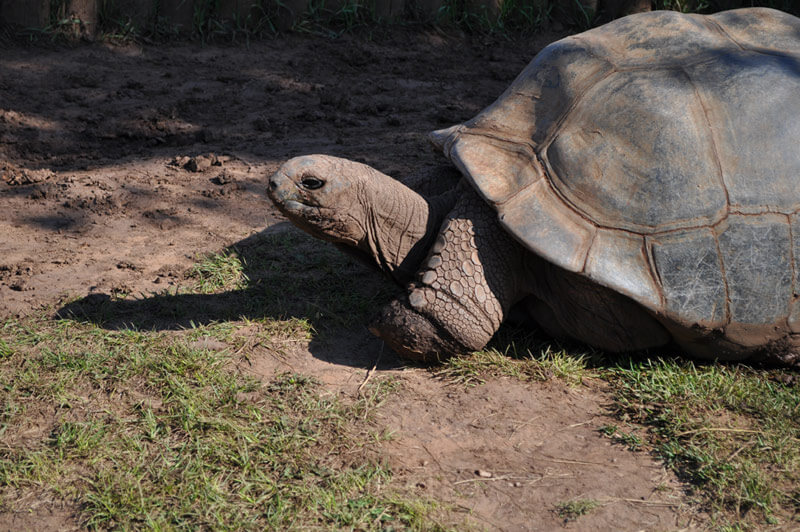
With an average lifespan much longer than a human's, potentially even 150 years, we’ve had many visitors ask us why giant tortoises live so long. Reptile Gardens Public Relations Director, John Brockelsby, has a theory about the longevity of tortoises, "These gentle giants are strict vegetarians, there is no fat or cholesterol in their diets. They move incredibly slowly, and have no stress in their lives...they are completely docile, peaceful creatures. We figure if humans followed these guidelines, we would probably see a dramatic increase in our own life spans."
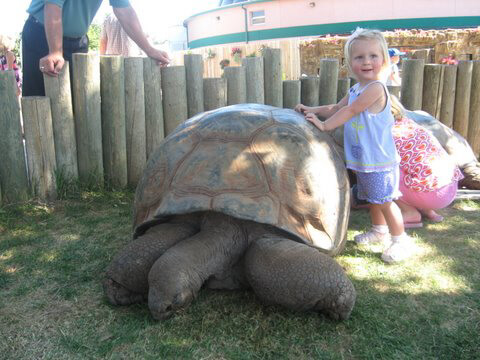
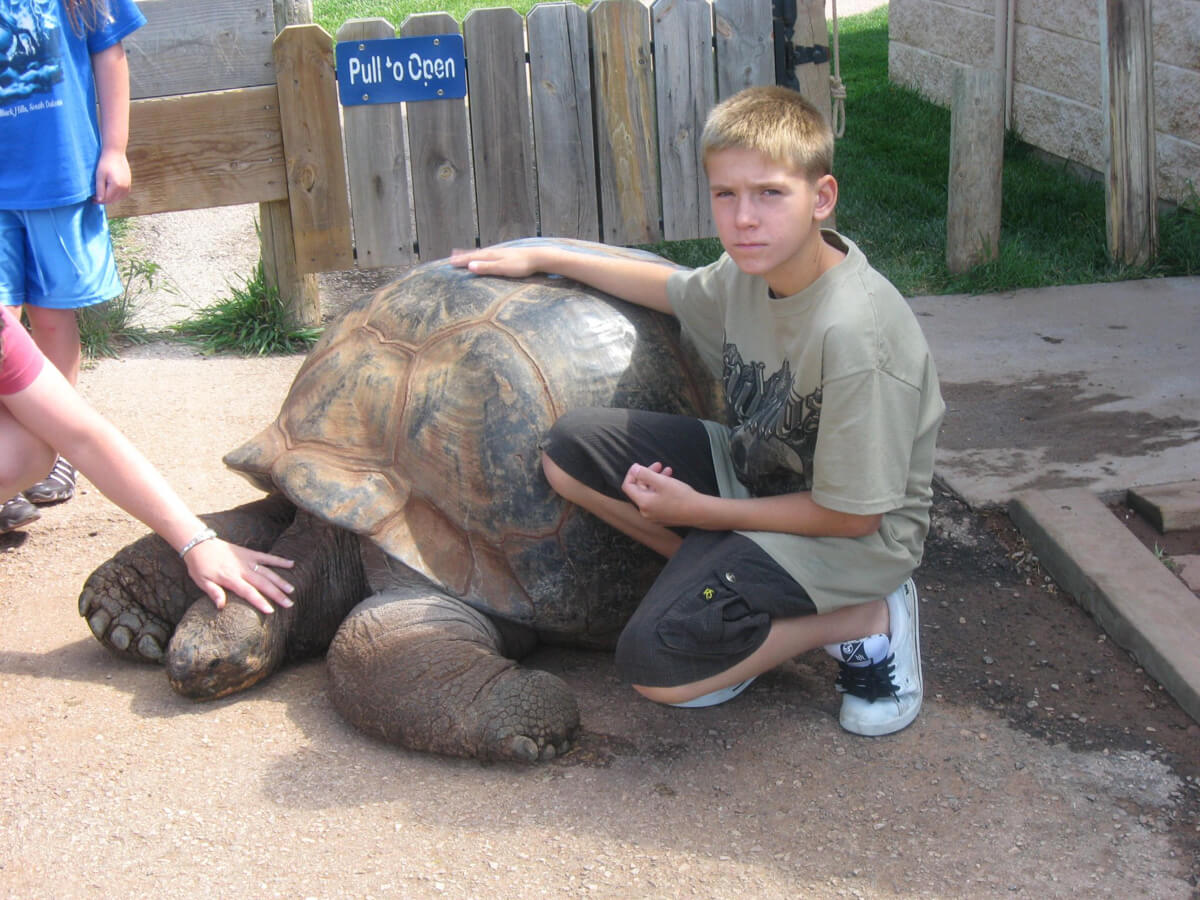
Conservation Status: Vulnerable
There are two types of Giant Tortoises found in the world – Aldabra and Galapagos. Aldabra tortoises come from the Seychelles Islands located in the Indian Ocean east of Africa; Galapagos tortoises inhabit the Galapagos Islands off the western coast of South America. Both types of giant tortoises are rare and are protected on their native islands and every effort is being made to increase their numbers to a safe level.
Methuselah
Our beloved giant tortoise, Methuselah, who passed away on July 9, 2011, was South Dakota's oldest resident. He was born in 1881 in the Galapagos Islands, and weighed in at 600 pounds. Since coming to his new home at Reptile Gardens in 1954, Methuselah celebrated his birthday each year by feasting on his favorite food, watermelon. In his honor, we’ve created a playground and have a replica bronze statue of Methuselah. Check out Methuselah’s Playground and take some time to relax and play like our tortoise friends know how to do so well.
Our giant, gentle Aldabra Tortoises love attention and they love to make new friends. Be sure you stop by and say “Hi” when you visit Reptile Gardens. They’re sure to become friends with you, and they’re great at posing for the camera!
